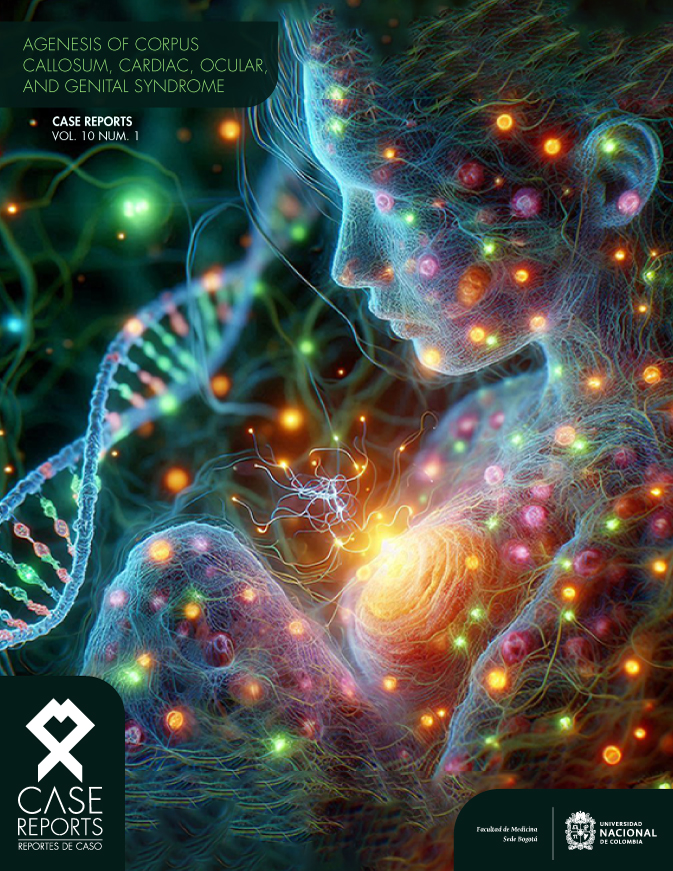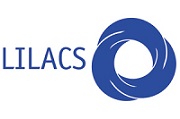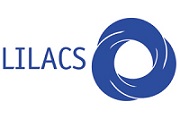De la importancia del genotipo y el fenotipo
On the importance of genotype and phenotype
DOI:
https://doi.org/10.15446/cr.v10n1.115356Palabras clave:
Genotipo, Fenotipo, Enfermedades Raras (es)Genotype, Phenotype, Rare Diseases (en)
Descargas
https://doi.org/10.15446/cr.v10n1.115356
On the importance of genotype and phenotype
Keywords: Genotype; Phenotype; Rare Diseases.
Palabras clave: Genotipo; Fenotipo; Enfermedades Raras.
Gilberto Eduardo Marrugo-Pardo
Hospital Universitario Nacional de Colombia - Department of Surgery - ENT Unit
- Bogotá - Colombia
Corresponding author
Gilberto Eduardo Marrugo-Pardo. Unidad de Otorrinolaringología, Departamento de Cirugía, Hospital Universitario Nacional de Colombia.
Bogotá. Colombia.
E-mail: gemarrugop@unal.edu.co
Received: 04/06/2024 Accepted: 21/06/2024
Editorial
Genetic disorders are often misunderstood, poorly studied, and inadequately addressed by health professionals. This is apparently a matter of frequency, as this type of
disorder is reported in 5 cases per 10 000 live births (7% of the world population), being the cause of 80% of the so-called rare diseases (1).
Some genetic diseases are well known, such as Down syndrome, Duchenne muscular dystrophy, sickle cell anemia, Huntington’s disease, cystic fibrosis, among others, and they are part of our daily practice as physicians, as well as part of the popular knowledge. There are also cases in which there are clinical findings consistent with these types of diseases but, in spite of this, we cannot classify them into a single syndrome.
Databases are very effective in the study of this type of cases. For example, in 1960, Dr. Victor Almon Mckusick initiated the publication of a catalog intended to document information about recognized inherited disorders, which led to the development of the Mendelian Inheritance in Man. This catalog is currently known as Online Mendelian Inheritance in Man (OMIM), and its first online version was developed in 1985. Since 1995, the OMIM has made available a free version that is edited and updated annually by the McKusick/Nathans Institute of Genetic Medicine (2).
At present, the database contains information on the relationship between genotype and phenotype for several diseases, with more than 27 000 entries including gene description, combined gene and phenotype description, phenotypic description with known molecular basis, some phenotypes with suspected Mendelian basis, as well as autosomal, mitochondrial and X- or Y-chromosome-linked diseases (2). This database, and others like it, allows clinicians to obtain data on patients with simultaneous findings in different systems of their body in which a Mendelian origin is suspected.
This issue of Case Reports presents a very interesting and rare case of a newborn with agenesis of corpus callosum, cardiac, ocular, and genital syndrome (ACOGS), which is caused by a heterozygous mutation in the CDH2 gene on chromosome 18q12. It was first described in 2019 by Accogli et al. (3), who presented a study of 9 cases (out of 13 published to date) and was introduced to OMIM on June 26, 2020. ACOGS in this database is numbered 618929 for the phenotype and 114020 for the locus.
In addition to the significance of this case due to its unusual occurrence, it is essential to highlight the careful approach to the diagnosis taken by the treating team. They suspected a syndrome of Mendelian origin from a scattered and rare phenotype and, after conducting a thorough search of the available literature (and this database), it was possible to confirm that the patient had that disorder.
Cystic fibrosis is another great example of a genetic disorder with many phenotypes for consideration, presenting with pulmonary and pancreatic symptoms, sweating disorders, and alterations in chromosomal location 7q31, 16p12 or 19q13, which demonstrates how several genes can affect the expression of a first affected gene. This can be observed in children affected by this disease, in whom early diagnoses can be made, as well as in adults in whom the diagnosis is made late because they have a much less severe variant of the disorder.
Clinicians of all specialties have the permanent and complex challenge of considering that many alterations in different systems can be regarded as part of a syndrome of genetic origin. Therefore, including the patient’s perspective in the comprehensive genetic assessment is of utmost importance, whether it is to make a proper diagnosis, provide prenatal counseling, detect a disease before symptom onset, or establish the best treatment as required.
References
1.Prieto-Morin C. Genética en Pediatría. Canarias Pediátrica. 2022;46(2):381-93. Available in:
https://bit.ly/3XCMYNl.
2.McKusick V.A. (1985). Mendelian Inheritance in Man. A Catalog of Human Genes and Genetic Disorders. [Internet]. Johns Hopkins University Press, Baltimore. Available in: https://omim.org/.
3.Accogli A, Calabretta S, St-Onge J, Boudrahem-Addour N, Dionne-Laporte A, Joset P, et al. De Novo Pathogenic Variants in N-cadherin Cause a Syndromic Neurodevelopmental Disorder with Corpus Callosum, Axon, Cardiac, Ocular, and Genital Defects. Am J Hum Genet. 2019; 105(4):854-68. https://doi.org/gsj4zh.
Referencias
Prieto-Morin C. Genética en Pediatría. Canarias Pediátrica. 2022;46(2):381-93. Available in: https://bit.ly/3XCMYNl.
McKusick V.A. (1985). Mendelian Inheritance in Man. A Catalog of Human Genes and Genetic Disorders. [Internet]. Johns Hopkins University Press, Baltimore. Available in: https://omim.org/.
Accogli A, Calabretta S, St-Onge J, Boudrahem-Addour N, Dionne-Laporte A, Joset P, et al. De Novo Pathogenic Variants in N-cadherin Cause a Syndromic Neurodevelopmental Disorder with Corpus Callosum, Axon, Cardiac, Ocular, and Genital Defects. Am J Hum Genet. 2019; 105(4):854-68. https://doi.org/gsj4zh.
Cómo citar
APA
ACM
ACS
ABNT
Chicago
Harvard
IEEE
MLA
Turabian
Vancouver
Descargar cita
Licencia
Derechos de autor 2024 Case reports

Esta obra está bajo una licencia internacional Creative Commons Atribución 4.0.
Los autores al someter sus manuscritos conservarán sus derechos de autor. La revista tiene el derecho del uso, reproducción, transmisión, distribución y publicación en cualquier forma o medio. Los autores no podrán permitir o autorizar el uso de la contribución sin el consentimiento escrito de la revista.
El Formulario de Divulgación Uniforme para posibles Conflictos de Interés y los oficios de cesión de derechos y de responsabilidad deben ser entregados junto con el original.
Aquellos autores/as que tengan publicaciones con esta revista, aceptan los términos siguientes:
Los autores/as conservarán sus derechos de autor y garantizarán a la revista el derecho de primera publicación de su obra, el cual estará simultáneamente sujeto a la Licencia de reconocimiento de Creative Commons 4.0 que permite a terceros compartir la obra siempre que se indique su autor y su primera publicación en esta revista.
Los autores/as podrán adoptar otros acuerdos de licencia no exclusiva de distribución de la versión de la obra publicada (p. ej.: depositarla en un archivo telemático institucional o publicarla en un volumen monográfico) siempre que se indique la publicación inicial en esta revista.
Se permite y recomienda a los autores/as difundir su obra a través de Internet (p. ej.: en archivos telemáticos institucionales o en su página web) antes y durante el proceso de envío, lo cual puede producir intercambios interesantes y aumentar las citas de la obra publicada. (Véase El efecto del acceso abierto).


























